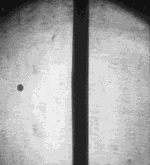Microsecond facts for kids
A microsecond (often written as μs) is a super tiny unit of time. It's like taking one whole second and dividing it into a million pieces – a microsecond is just one of those pieces!
To give you an idea of how small it is, there are 1,000 nanoseconds in one microsecond. And if you collect 1,000 microseconds, you get one millisecond.
What is a Microsecond?
A microsecond is a unit of time that is equal to 0.000001 seconds. This means it's one millionth of a second. We use microseconds to measure very quick events, like how fast computers work or how quickly light travels.
Microseconds in Action
Here are some cool examples of how fast a microsecond is:
- 1 microsecond: This is how long a super-fast camera flash usually lasts. It's so quick you barely notice it!
- 2 microseconds: This is the very short lifespan of a tiny particle called a muonium.
- 2.68 microseconds: The huge 2004 Indian Ocean earthquake was so powerful that it actually made Earth's day shorter by this tiny amount of time!
- 3.33564095 microseconds: This is how long it takes for light to travel one kilometer in empty space. Light is incredibly fast!
- 5.4 microseconds: Light can travel one mile in empty space in this amount of time.
- 15 microseconds: Every year, the Moon adds this tiny bit of time to Earth's year. It's a very slow change!
- 38 microseconds: This is the small time difference in GPS satellites because of something called relativity. It's a complex idea, but it shows how precise GPS needs to be.
- 240 microseconds: This is the half-life of a special, very heavy element called ununbium 277. Half-life means how long it takes for half of the atoms of a radioactive substance to break down.
See also
 In Spanish: Microsegundo para niños
In Spanish: Microsegundo para niños

All content from Kiddle encyclopedia articles (including the article images and facts) can be freely used under Attribution-ShareAlike license, unless stated otherwise. Cite this article:
Microsecond Facts for Kids. Kiddle Encyclopedia.

